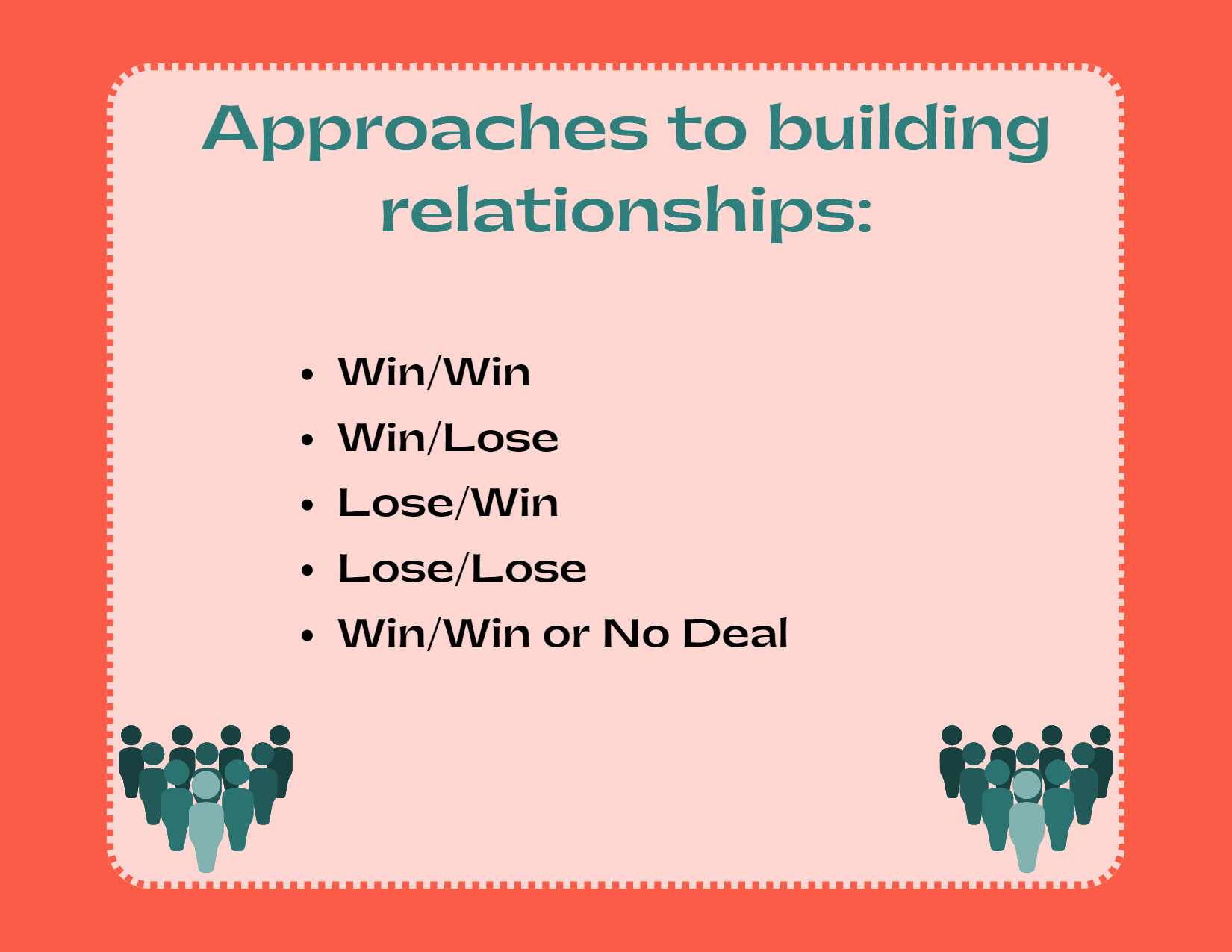Managing conflict constructively means:
- Minimizing its negative outcomes.
- Maximizing its potentially positive outcomes.
It does not mean resolving the conflict in every conflict situation.
Click here to view a video that explains how to resolve workplace conflict.
Stephen Covey in his book “The 7 Habits of Highly Effective People” identifies relationship building 5 approaches to relationships:

Win/Win
Win/Win perceives life as cooperative and not competitive. It is a frame of mind that constantly seeks mutual benefit in all human transactions. In this approach all parties benefit – the needs of all parties are satisfied. Put differently, there are no losers. Can you think how this principle may apply in different life theatres?
Win/Lose
The alternative to Win/Win is Win/Lose. This approach is typified by an approach that what is mine is mine and what is yours is negotiable. These characteristics are often found in authoritarian people who constantly want their own way at the expense of those around them. An example would be a husband who wants his and only his needs met at the expense of his wife and his children. This approach also finds application in the world of work. Why is this approach so ineffective? Can you think of any examples?
Lose/Win
Some people are programmed to think and behave in a Lose/Win way. This is often regarded as the victim mentality. People who are unable to assert themselves easily fall into a lose/win scenario. They allow the other to dominate at the expense of their own desires, needs, dreams and aspirations. Can you think of examples in this respect?
Lose/Lose
Lose/Lose scenarios are characterised by people who are for the most part inflexible domineering and egocentric. If parties come to a negotiation with an attitude of win/lose – where there is no place for concessions on either side - it often leads to a dead end or stalemate. Can you think of examples in this respect?
Win/Win Or No Deal
On certain rare occasions parties for various reasons fail to come to arrive at a negotiable settlement satisfactory to all. When basic principles and values are so far removed and difficult to reconcile a possible alternative would be to agree to not agree and hence, there is no deal.
Win/Win Approach To Resolving Conflict
Your primary goal for dealing with conflict situations is to resolve the conflict by finding the best solution that most fully satisfies the needs of those involved. The more effectively the needs are met, the more satisfied the individuals will be with the outcome.
If it becomes apparent that the person has wants or needs that you really cannot do anything about and the conflict will not be resolved, your goal then changes to minimizing bad feelings and preserving the relationship so that future communication will be possible.
To implement your goal of effectively satisfying needs, it is important to use a process that allows both parties a chance to talk through their differences and try to reach a solution that satisfies both parties.
This process can be applied in one-on-one situations or group situations. It involves:
- Each person participates fully in discussing the issue or problem.
- Parties striving for a decision that each person can accept and support.